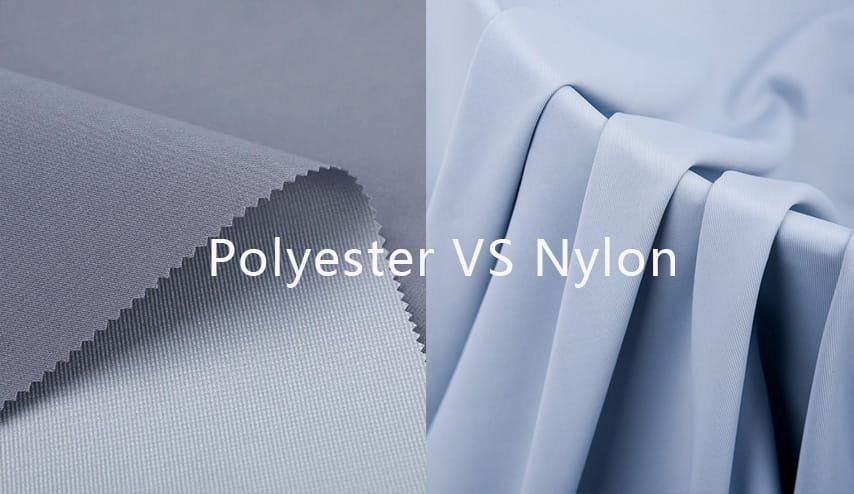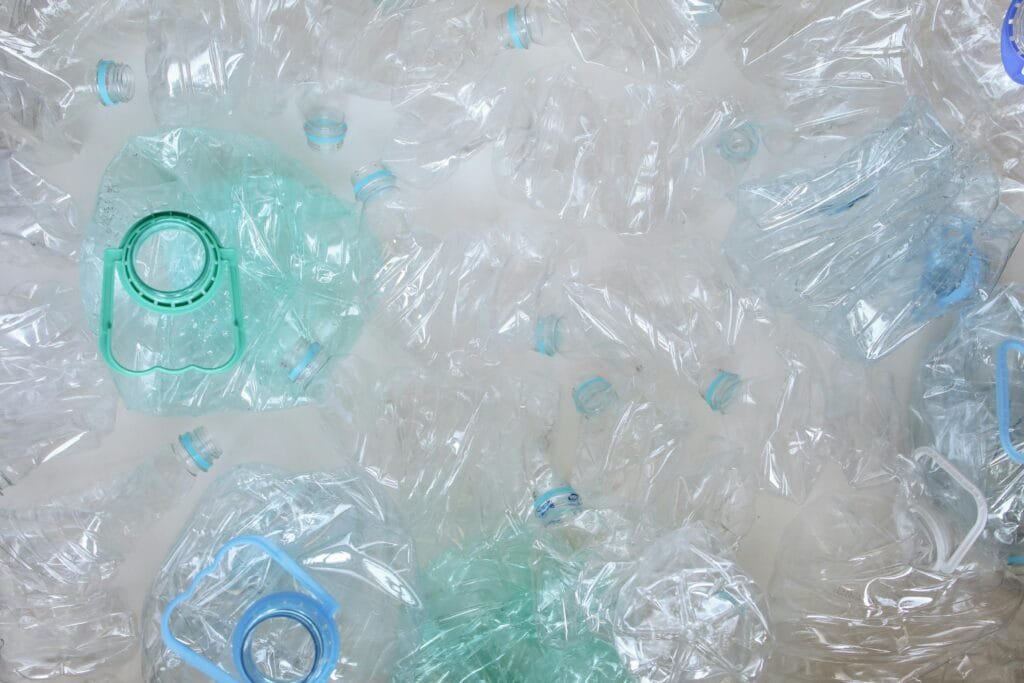Choosing the right fabric is one of the most critical decisions for a swimwear line. It impacts durability, comfort, cost, and brand perception. While nylon often gets the spotlight for its silky feel, polyester is a workhorse fabric that offers unparalleled performance and value.
But is polyester right for your swimwear line? Let’s dive into what makes it unique, its advantages and disadvantages, and when it makes sense for your brand to choose polyester over nylon.
What Is Polyester Swimwear Fabric?
Polyester is a synthetic fabric derived from petroleum-based polymers. First introduced in the 1950s, modern innovations have transformed it from a stiff material into a versatile staple for fashion and sportswear.
In swimwear, polyester is almost always blended with spandex (also known as elastane or Lycra®) to add necessary stretch. The typical composition is 80-85% polyester and 15-20% spandex. This blend creates a fabric that is strong, durable, and resistant to common swimwear aggressors like chlorine and UV rays.
Why Is Polyester a Popular Choice for Swimwear?
Polyester has secured its place in the swimwear industry for one primary reason: longevity.
Competitive swimmers, fitness enthusiasts, and everyday consumers trust polyester swimsuits to keep their shape, resist fading, and hold up to countless hours in the sun and pool.
For brands, polyester is a practical choice—it’s cost-effective for bulk production, widely available, and prints exceptionally well.
With the rise of recycled polyester (rPET), it has also become a leading choice for eco-conscious collections, offering a powerful sustainability story that resonates with today’s market.



Key Advantages of Polyester Swimwear
From a performance standpoint, polyester brings clear technical benefits:
- Chlorine Resistance: It resists damage from chlorine far better than nylon, making it the top choice for frequent pool use and athletic swimwear.
- UV Resistance: Colors stay vibrant and the fabric integrity is maintained thanks to its excellent resistance to UV radiation.
- Durability & Shape Retention: The fabric maintains its shape after repeated wear, stretching, and washing.
- Exceptional Print Quality: Polyester produces crisp, sharp, and vibrant prints, allowing for detailed patterns and designs.
- Cost-Effective: It is generally more affordable and easier to source than nylon, giving brands flexibility in both small and large production runs.
Potential Disadvantages of Polyester Swimwear
While polyester is a strong performer, it’s not without trade-offs:
- Hand Feel: Compared to nylon, polyester can feel slightly less soft and silky, which may not align with luxury or fashion-focused collections.
- Limited Natural Stretch: On its own, polyester has minimal stretch, making a spandex blend essential for a comfortable, form-fitting suit.
- Breathability: Some customers find it less breathable than other fabrics, particularly in very hot and humid climates.
- Sustainability Concerns: Virgin polyester is petroleum-based. However, this is effectively addressed by using recycled polyester (rPET), a widely available alternative.
Polyester vs. Nylon: Which Fabric Should You Choose?

This is the most common question for swimwear brands. The best choice depends entirely on your product’s intended use and target audience.
Choose nylon for fashion-forward, luxury swimwear where a silky hand feel is paramount. Choose polyester for performance, durability, chlorine resistance, and sustainable options.
Here’s a direct comparison:
| Feature | Polyester Swimwear | Nylon Swimwear |
| Feel & Comfort | Durable, slightly less soft. | Silky, smooth, and soft to the touch. |
| Durability | Excellent. Highly resistant to chlorine, UV rays, and pilling. | Good. Prone to breaking down faster with chlorine and sun exposure. |
| Stretch & Fit | Good stretch and shape retention when blended with spandex. | Excellent elasticity and body-contouring fit. |
| Color & Print | Excellent for sharp, vibrant, and detailed digital prints. | Takes dye very well, producing bold, bright colors. |
| Quick-Drying | Excellent. Absorbs less water, making it dry faster. | Fair. Absorbs more water, feels heavier when wet, and takes longer to dry. |
| Cost | More affordable and cost-effective for bulk manufacturing. | Generally more expensive. |
| Best For | Performance swimwear, competitive suits, children’s wear, and printed basics. | Luxury collections, resort wear, and fashion-forward styles. |
The Rise of Sustainable Alternatives: Recycled Polyester (rPET)
One of the biggest advantages of using polyester today is the availability of recycled options. Recycled polyester (rPET) is made from post-consumer plastic waste, such as PET bottles.

Benefits of rPET for Swimwear Brands:
- Offers the same high-performance durability and chlorine resistance as virgin polyester.
- Reduces reliance on petroleum, a finite resource.
- Lowers the carbon footprint of your production.
- Provides a compelling sustainability story for eco-conscious consumers.
For modern swimwear brands, offering rPET is no longer a niche—it’s an expectation.
Practical Applications: Who Should Use Polyester?
Polyester shines when performance is a priority.
Swimwear Basics & Rash Guards: For core collection items like one-piece suits, swim shorts, and rash guards, polyester’s quick-drying properties and colorfastness ensure they last season after season.
Training & Athletic Swimwear: Swim teams, fitness swimmers, and athletic brands almost exclusively use polyester for its unmatched chlorine and UV resistance.
Children’s Swimwear: Parents value durability. Polyester swimsuits resist fading and withstand heavy use in pools and at the beach, making them a practical and cost-effective choice.
Swimwear Basics & Rash Guards: For core collection items like one-piece suits, swim shorts, and rash guards, polyester’s quick-drying properties and colorfastness ensure they last season after season.
How to Care for Polyester Swimwear
Polyester is low-maintenance, but providing customers with simple care instructions can extend a garment’s life and build brand trust.
Rinse Immediately: Always rinse with cool, fresh water after swimming to remove chlorine or salt.
Wash Gently: Use a mild detergent and wash in cold water on a gentle cycle.
Avoid Fabric Softeners: These can coat the fibers and reduce the fabric’s elasticity and moisture-wicking properties.
Air Dry: Lay flat or hang to dry in the shade. Avoid direct sunlight or high heat from a dryer, as it can damage the spandex fibers in the blend.
The Final Verdict: Is Polyester Right for Your Brand?
Polyester is a reliable, versatile, and increasingly sustainable choice for modern swimwear. While it may not have the luxury feel of nylon, it excels in markets where longevity, vibrant prints, and affordability are paramount.
The smartest strategy is often not choosing one over the other, but using each fabric strategically. Use nylon for your premium, fashion-driven pieces and leverage polyester for your performance, children’s, and core collections.
By understanding the distinct strengths of polyester, you can make smarter material choices that align perfectly with your customers’ needs.
This depends entirely on the style of the swimwear.
For form-fitting swimwear (like bikinis, one-pieces, briefs, or jammers): No. These garments must cling to the body and allow for a full range of motion, which requires the significant stretch provided by a polyester-spandex blend (typically 85/15 or 80/20).
For looser-fitting swimwear (like men’s swim trunks or board shorts): Yes. 100% polyester is an excellent and very common choice for this style. These trunks are typically made from a woven polyester microfiber, which is lightweight, extremely durable, and dries incredibly fast. Since they are cut for a loose fit, they don’t require the body-hugging stretch that spandex provides.
Quite the opposite. Polyester’s superior resistance to chlorine is one of its greatest strengths and a primary reason why it’s the preferred fabric for competitive and training swimwear. Unlike nylon, it holds its color and structural integrity even after prolonged exposure to pool chemicals.
Yes, absolutely. Recycled polyester (rPET) offers the same high-performance characteristics as its virgin counterpart. It provides the same level of durability, chlorine resistance, UV protection, and print quality, all while reducing reliance on petroleum and lowering your brand’s environmental footprint.
Nylon is generally considered softer and has a silkier, smoother hand feel than polyester. This is why nylon is often the fabric of choice for luxury, resort, and fashion-forward swimwear lines where a premium feel against the skin is a top priority. Polyester, while comfortable, is valued more for its robust, durable texture.

